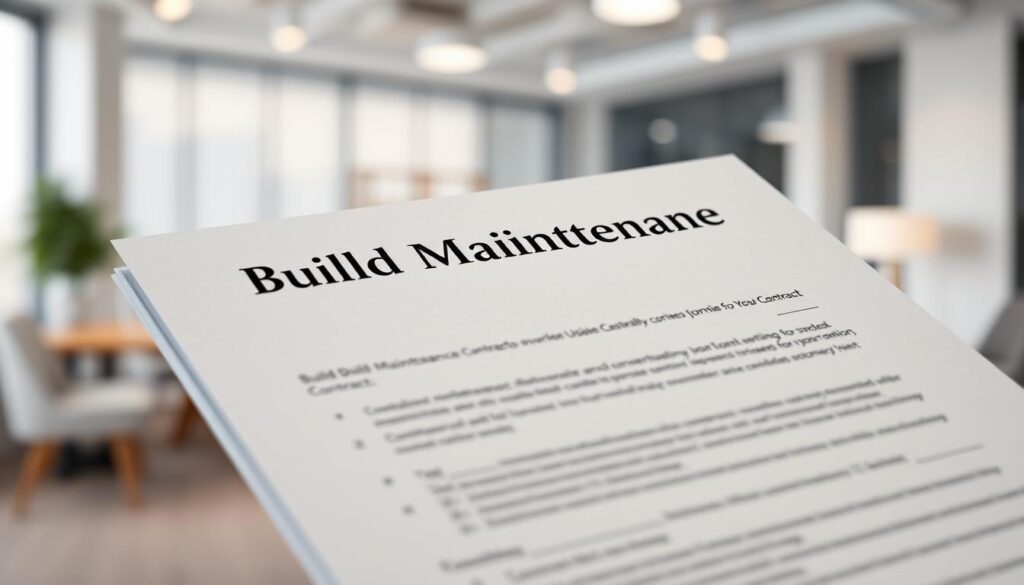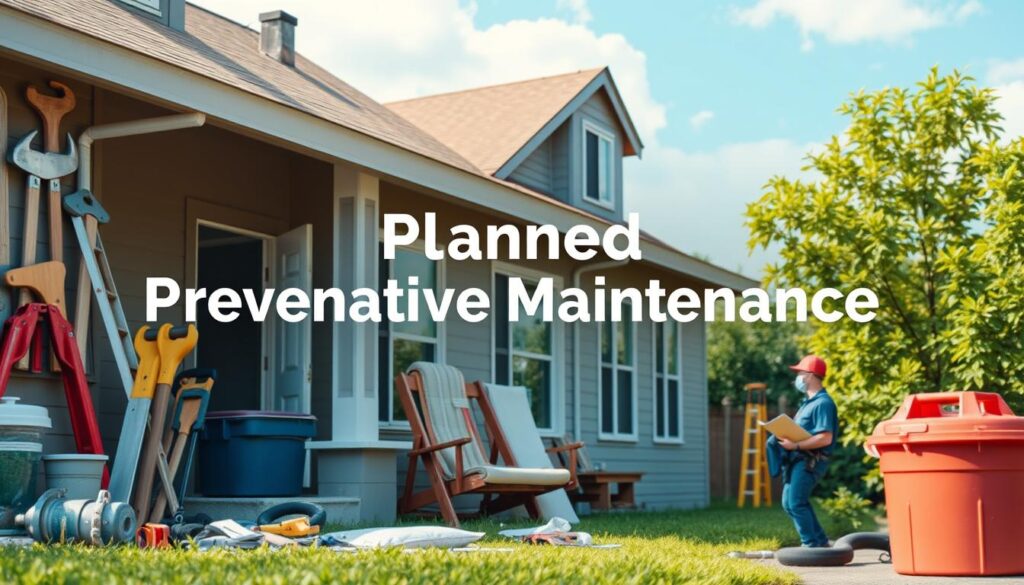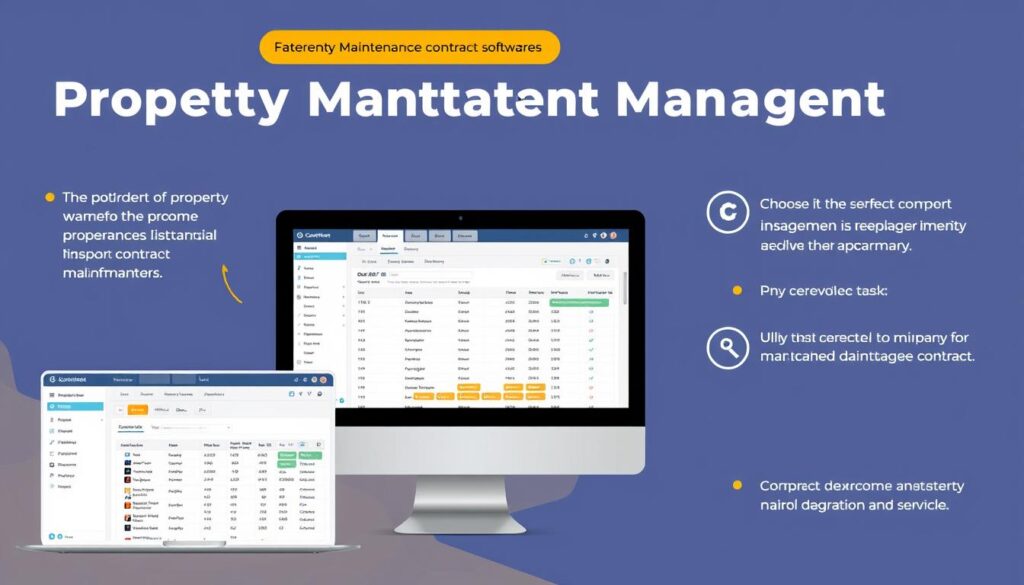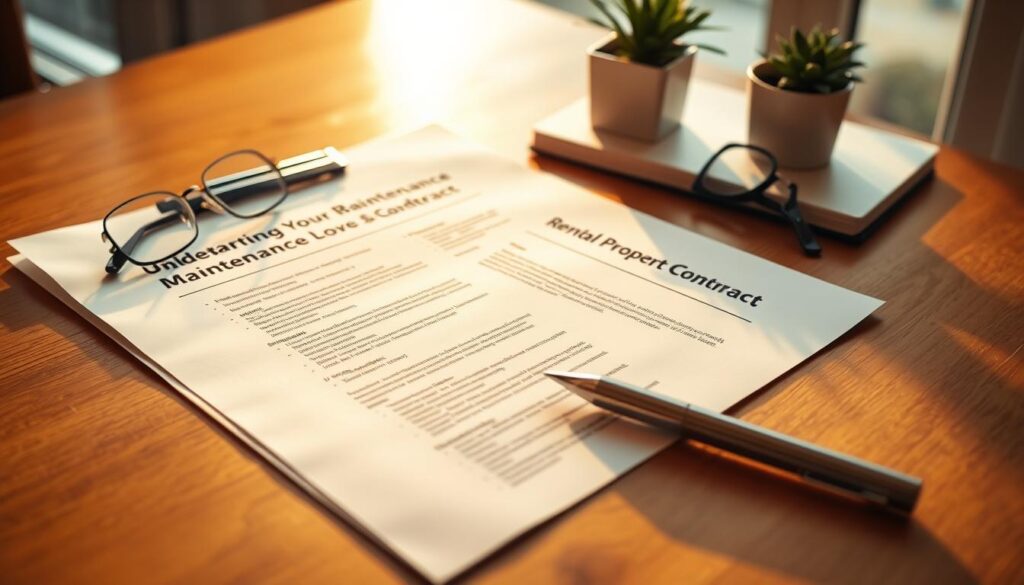Are you aware of the potential risks and financial losses associated with inadequate property maintenance? As a landlord, managing a rental property involves more than just collecting rent; it requires ensuring that your property is well-maintained and compliant with relevant laws.
A maintenance contract is essential for landlords to establish a clear understanding of their responsibilities and the standards expected of them.
This comprehensive guide will help you understand the importance of a maintenance agreement for your rental property, including the key components and legal framework that govern landlord obligations.
Key Takeaways
- Understand the legal requirements for property maintenance under UK law.
- Learn how a maintenance contract can protect you and your tenants.
- Discover the essential components of a comprehensive maintenance agreement.
- Find out how to manage your property more efficiently with a maintenance contract.
- Avoid disputes and costly repairs by understanding your maintenance obligations.
What Is a Build Maintenance Contract for Landlords?
The importance of a build maintenance contract cannot be overstated, as it establishes clear expectations between landlords and maintenance providers. A build maintenance contract is a formal agreement that outlines the responsibilities for maintaining and repairing rental properties.
Definition and Purpose
A property maintenance contract is a documented agreement between your service business and your customer. It details how you’ll maintain, repair, or otherwise take care of their property and/or asset. The primary purpose of such contracts is to ensure properties remain in good condition, comply with legal standards, and provide tenants with safe, habitable living environments.
Types of Maintenance Contracts
Different types of maintenance contracts exist, including comprehensive contracts covering all aspects of property maintenance, specific system contracts (like HVAC or plumbing), and emergency-only contracts. Understanding the distinction between preventative maintenance contracts and reactive maintenance contracts is crucial for landlords to select the right type for their property portfolio.
| Type of Contract | Description | Benefits |
|---|---|---|
| Comprehensive | Covers all aspects of property maintenance | Ensures overall property condition |
| Specific System | Focuses on specific systems like HVAC or plumbing | Optimizes system performance |
| Emergency-Only | Addresses emergency repairs only | Provides urgent repair solutions |
Legal Framework: Landlord Maintenance Obligations
The legal framework surrounding landlord maintenance obligations in the UK is multifaceted, involving various statutes and common law principles. As a landlord, it is essential to understand these obligations to ensure compliance and protect both your interests and those of your tenants.
Landlord and Tenant Act 1985
The Landlord and Tenant Act 1985 is a cornerstone of landlord maintenance obligations. Section 11 of this Act places specific repair obligations on landlords for properties let on leases shorter than seven years, covering the structure, exterior, and utility installations.
Homes (Fitness for Human Habitation) Act 2018
The Homes (Fitness for Human Habitation) Act 2018 strengthened tenant protections by requiring rental properties to be fit for human habitation at the start and throughout the tenancy. This Act ensures that landlords maintain properties in a habitable condition.
Common Law Obligations
In addition to statutory requirements, common law obligations establish implied terms that are binding, even if not explicitly stated in the tenancy agreement. Understanding these obligations is crucial for drafting a maintenance contract that aligns with statutory requirements and provides adequate protection for all parties.
Key Components of a Build Maintenance Contract for Landlords
The effectiveness of a build maintenance contract hinges on several critical elements that landlords should be aware of. A comprehensive contract ensures that all parties understand their roles and responsibilities in maintaining the property.
Parties and Property Details
A build maintenance contract should clearly identify all parties involved and include detailed property information. This clarity helps avoid confusion about which properties are covered under the agreement.
Scope of Services
The scope of services section is crucial as it outlines exactly what maintenance tasks are included and excluded. It covers routine maintenance, repairs, and emergency services, ensuring that the property is well-maintained.
| Component | Description | Importance |
|---|---|---|
| Term and Termination Provisions | Specifies contract duration, renewal options, and termination conditions. | High |
| Payment Terms | Details fee structure, payment schedule, and invoicing process. | High |
| Service Standards | Outlines the expected quality of service and response times. | Medium |
Term and Termination Provisions
These provisions should specify the contract duration, renewal options, and conditions under which either party can terminate the agreement.
Payment Terms
Payment terms need to detail the fee structure, payment schedule, invoicing process, and any additional charges for emergency or out-of-hours services.

Understanding Service Level Agreements (SLAs)
Understanding the intricacies of Service Level Agreements (SLAs) can significantly enhance the quality of service you receive from maintenance providers. SLAs are critical components of build maintenance contracts that establish measurable standards for service delivery.
Response Times for Different Maintenance Categories
Response times for different maintenance categories should be clearly defined. This includes distinguishing between emergency situations requiring immediate attention, urgent repairs within 24-48 hours, and routine maintenance scheduled within a reasonable timeframe.
Performance Metrics and Standards
Service Level Agreements typically include performance metrics such as completion rates, first-time fix rates, tenant satisfaction scores, and compliance with regulatory requirements. These metrics help in evaluating the quality of services provided under the agreement.
Landlord Repair Responsibilities vs. Tenant Obligations
The distinction between landlord repair responsibilities and tenant obligations is vital for effective property management. Understanding these roles can help prevent disputes and ensure that your property is well-maintained.
Structure and Exterior Maintenance
As a landlord, you are typically responsible for maintaining the structure and exterior of your property. This includes walls, roof, foundations, guttering, and external pipework, as specified in Section 11 of the Landlord and Tenant Act 1985. Ensuring that these elements are in good condition is crucial for the overall integrity of the property.
Utilities and Services
You are also responsible for maintaining utility installations such as electrical wiring, gas pipes, water supply, heating systems, and sanitary fixtures. These are essential services that must be kept in proper working order to ensure the property remains habitable.
Tenant’s Responsibilities
While your responsibilities as a landlord are significant, your tenants also have certain obligations. These typically include keeping the property reasonably clean, using appliances properly, replacing light bulbs, and checking smoke alarm batteries. Tenants must use the property in a ‘tenant-like manner,’ meaning they should take reasonable care of the property and report any maintenance issues promptly.
A well-drafted maintenance agreement should clearly outline these responsibilities to prevent misunderstandings and ensure that both parties understand their obligations regarding property upkeep.
Emergency Maintenance Provisions
Emergency maintenance provisions are a vital aspect of any build maintenance contract for landlords. These provisions ensure that swift responses are made to situations that pose immediate risks to tenant safety or property integrity.
Defining Emergency Situations
Clearly defining what constitutes an emergency is essential. Typically, emergencies include gas leaks, major water leaks, complete electrical failure, security breaches, and heating system failures during cold weather. Understanding these categories helps in planning the maintenance agreement and ensuring compliance with the service requirements.
Out-of-Hours Response Procedures
Out-of-hours response procedures should detail how tenants can report emergencies outside normal business hours, who will respond, and the guaranteed response times. The contract should specify any additional costs associated with emergency callouts and how these will be invoiced and paid.
| Emergency Type | Response Time | Additional Costs |
|---|---|---|
| Gas Leak | 4 hours | £50 |
| Major Water Leak | 4 hours | £50 |
| Electrical Failure | 24 hours | £100 |

Implementing a reliable system for logging, tracking, and resolving emergency maintenance requests helps demonstrate compliance with the contract terms and provides valuable data for service improvement.
Planned Preventative Maintenance Schedules

A well-structured planned preventative maintenance schedule can significantly reduce emergency repairs and improve tenant satisfaction. By adopting a proactive approach, landlords can ensure their rental properties remain in good condition, reducing the likelihood of costly repairs.
Benefits of Preventative Maintenance
Preventative maintenance offers numerous benefits, including reduced emergency callouts, lower long-term maintenance costs, and improved tenant satisfaction. By identifying potential issues before they become major problems, landlords can extend the lifespan of building systems and components, ultimately enhancing property value retention.
Creating Effective Maintenance Schedules
To create an effective maintenance schedule, landlords should identify all maintainable components, determine appropriate maintenance frequencies based on manufacturer recommendations and usage patterns, and document all procedures. Seasonal considerations should also be incorporated, with heating systems checked before winter and cooling systems before summer. Planned preventative maintenance can be significantly improved with digital maintenance management systems that automate reminders, track completion, and maintain comprehensive maintenance histories.
Health and Safety Compliance Requirements
Your build maintenance contract must include provisions for health and safety compliance to ensure your property meets legal standards and provides a safe environment for your tenants.
Several key areas must be addressed in your maintenance contract to ensure compliance with health and safety regulations.
Gas Safety Regulations
Gas safety checks are mandatory and must be performed annually by Gas Safe registered engineers. You must provide your tenants with a gas safety certificate within 28 days of the inspection and keep records for at least two years.
Electrical Safety Standards
The Electrical Safety Standards in the Private Rented Sector Regulations 2020 require electrical installations to be inspected and tested at least every five years. This ensures that your property’s electrical systems are safe and compliant with current standards.
Fire Safety Measures
Fire safety measures include ensuring functional smoke and carbon monoxide alarms, providing fire-resistant furnishings, maintaining clear escape routes, and installing appropriate fire-fighting equipment. Larger properties may have additional requirements.
Houses in Multiple Occupation (HMO) Requirements
HMOs have enhanced compliance requirements, including mandatory licensing for larger HMOs, specific room size standards, and additional fire safety measures. Your maintenance contract should address these specific needs.
| Safety Measure | Frequency | Responsibility |
|---|---|---|
| Gas Safety Check | Annually | Landlord |
| Electrical Safety Inspection | Every 5 years | Landlord |
| Fire Alarm Testing | Regularly | Landlord/Tenant |
Managing Your Maintenance Contract Effectively

Managing your property maintenance contract effectively is key to maintaining your investment and ensuring tenant satisfaction. Effective management requires a systematic approach to record-keeping, communication, and performance monitoring.
Record-Keeping Best Practices
Implementing robust record-keeping practices is essential. This includes maintaining digital copies of all contracts, inspection certificates, maintenance logs, and communication with contractors and tenants. Accurate records help in tracking the history of maintenance work, which is vital for planning future maintenance and resolving potential disputes.
Using Technology for Contract Management
Modern property management software solutions can significantly streamline contract management. These tools automate maintenance schedules, track contractor performance against Service Level Agreements (SLAs), and provide real-time reporting capabilities. By leveraging technology, landlords can enhance the efficiency of their maintenance operations and improve tenant satisfaction.
To maximise the benefits of your maintenance contract, it’s crucial to establish clear communication channels between landlords, maintenance providers, and tenants. Regular contract reviews should also be conducted to assess contractor performance and identify areas for improvement.
Common Disputes and How to Avoid Them
Common disputes in build maintenance contracts often stem from misunderstandings about responsibilities and unclear contract terms. As a landlord, it’s crucial to understand the intricacies of your maintenance agreement to prevent such disputes.
Distinguishing Between Repairs and Improvements
It’s essential to distinguish between ‘repair’ and ‘improvement’ within your tenancy agreement. Repairs involve renewing or replacing subsidiary parts of the building, whereas improvements add new features or upgrade existing ones beyond their original specification. The law doesn’t obligate landlords to effect improvements unless expressly agreed upon in the agreement.
Addressing Condensation and Mould Issues
Condensation is a frequent issue in rental properties, often disputed within tenancy agreements. If condensation damages the main fabric of the property, such as plasterwork, the landlord may need to repair it. However, this doesn’t cure the condensation; it merely addresses its consequences. Clear contract language can help mitigate such disputes.
Establishing a formal dispute resolution process within your maintenance contract provides a structured approach to addressing disagreements, potentially avoiding costly legal proceedings.
Conclusion: Maximising the Value of Your Maintenance Contract
A build maintenance contract is a vital tool for landlords, providing clarity and legal protection for their rental properties. To maximise its value, ensure it comprehensively covers all aspects of property maintenance while clearly delineating landlord and tenant responsibilities.
Regular reviews of your maintenance contract help identify opportunities for improvement, ensure continued compliance with evolving regulations, and maintain alignment with your property management goals. By building strong relationships with reliable maintenance contractors, you can achieve better service and faster response times.
Ultimately, investing time in understanding and properly structuring your maintenance agreement leads to reduced stress, lower long-term costs, improved tenant satisfaction, and enhanced property value preservation. By following these guidelines, you can maximise the value of your maintenance contract and protect your rental properties.



